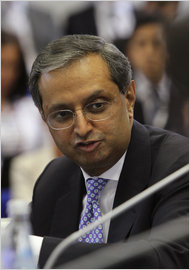Federal auditors said that the government failed to rein in executive compensation at the biggest companies it bailed out during the financial crisis because its main concern was simply getting its money back.
Months after the emergency rescues began in the fall of 2008, the Obama administration announced pay caps of $500,000 for executives of seven companies that received major assistance from the taxpayers. Congress then passed a law requiring the Treasury to establish a special master to administer the cap and other new compensation rules for those that received the most money from the Trouble Asset Relief Program, or TARP.
Though Kenneth Feinberg, the special master, had been appointed to oversee the pay, a report released early Tuesday said that he had been pressured by both the companies and the Treasury to get around the caps.
Forty-nine people received packages worth $5 million or more from 2009 to 2011, according to the report.
Two of the seven companies that were singled out, Bank of America and Citigroup, were so eager to avoid the pay caps that they paid back their bailout money long before anyone expected them to be able to.
The other five companies were the American International Group, Chrysler, Chrysler Financial, General Motors and Ally Financial, which was formerly the General Motors Acceptance Corporation.
Negotiators for the companies told Mr. Feinberg that their top people needed big cash salaries, or at least payment in stock that could be sold right away. Otherwise they would quit, the argument went, harming the companies’ profitability and the likelihood they could ever pay back the government.
In one bargaining session, the chief executive of Ally Financial offered the example of an employee making $1.5 million, with $1 million of it in cash.
“This individual is in their early 40s, with two kids in private school, who is now considered cash poor,” Ally’s chief explained, adding that such people “would not meet their monthly expenses” if the new rules were followed.
A.I.G., G.M. and Ally still collectively owe the taxpayers about $87 billion.
“Under conflicting principles and pressures,” Mr. Feinberg approved multimillion-dollar packages for many executives, the audit said. Mr. Feinberg developed a system for approving or rejecting the requests.
Article source: http://feeds.nytimes.com/click.phdo?i=4937249647560570916dcc2c8cba836f

